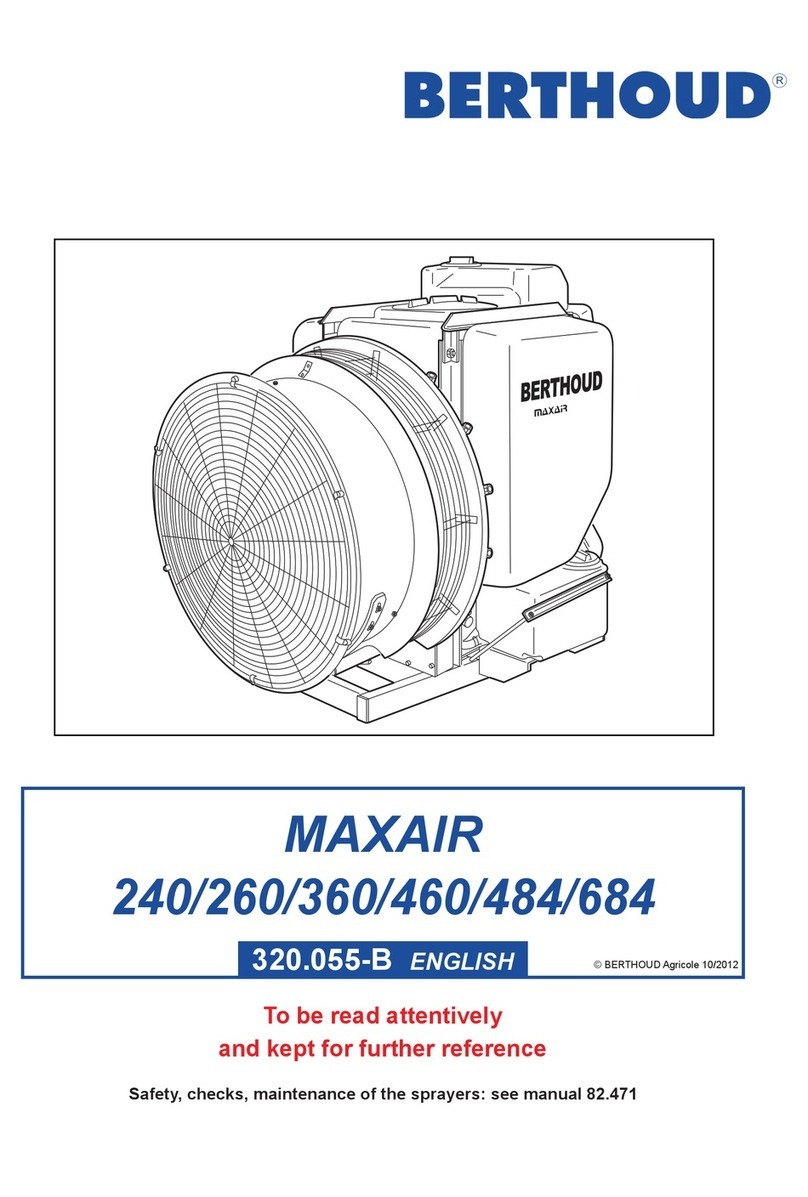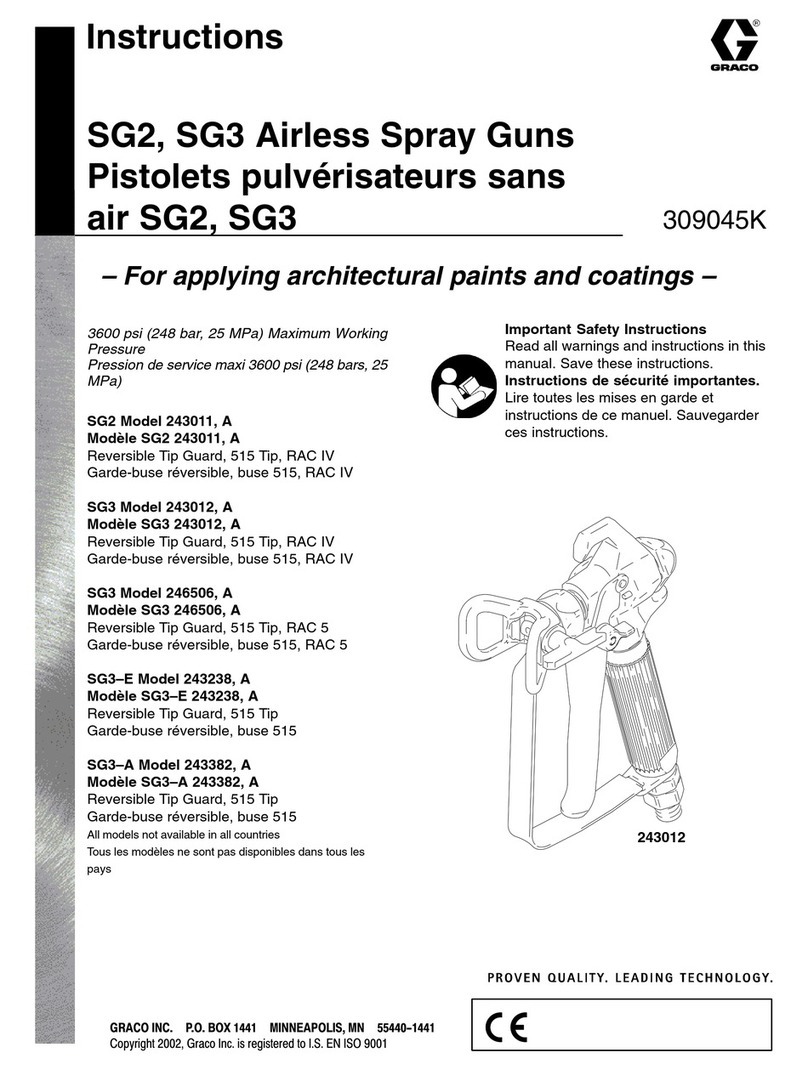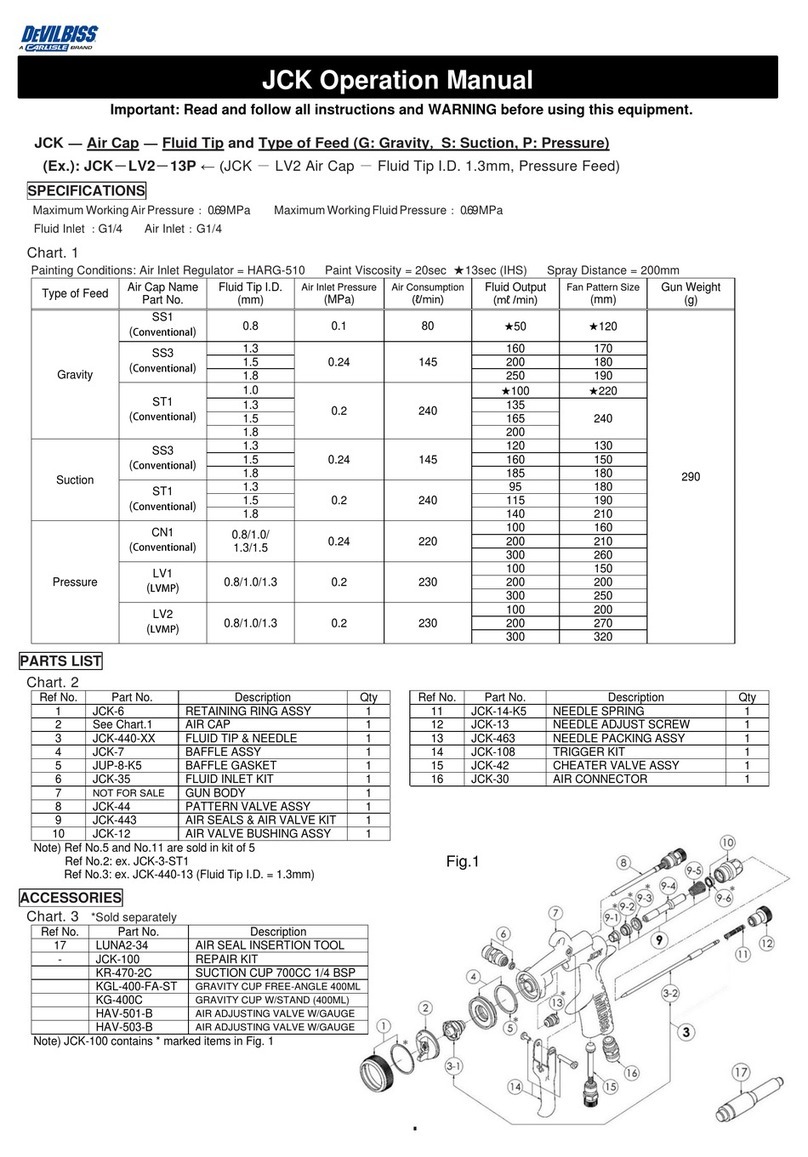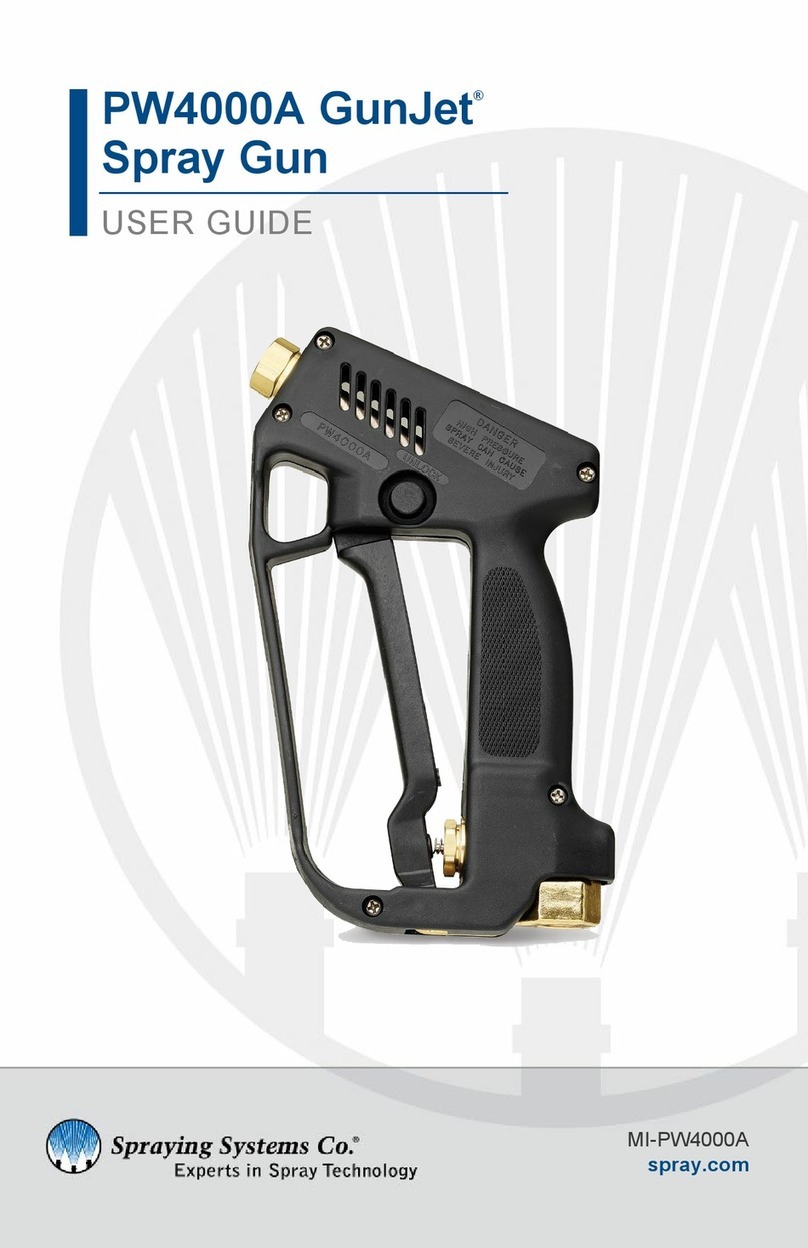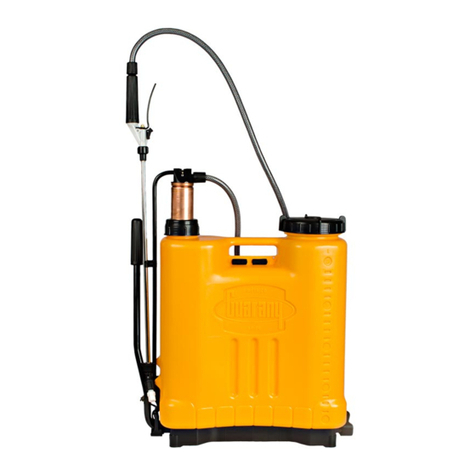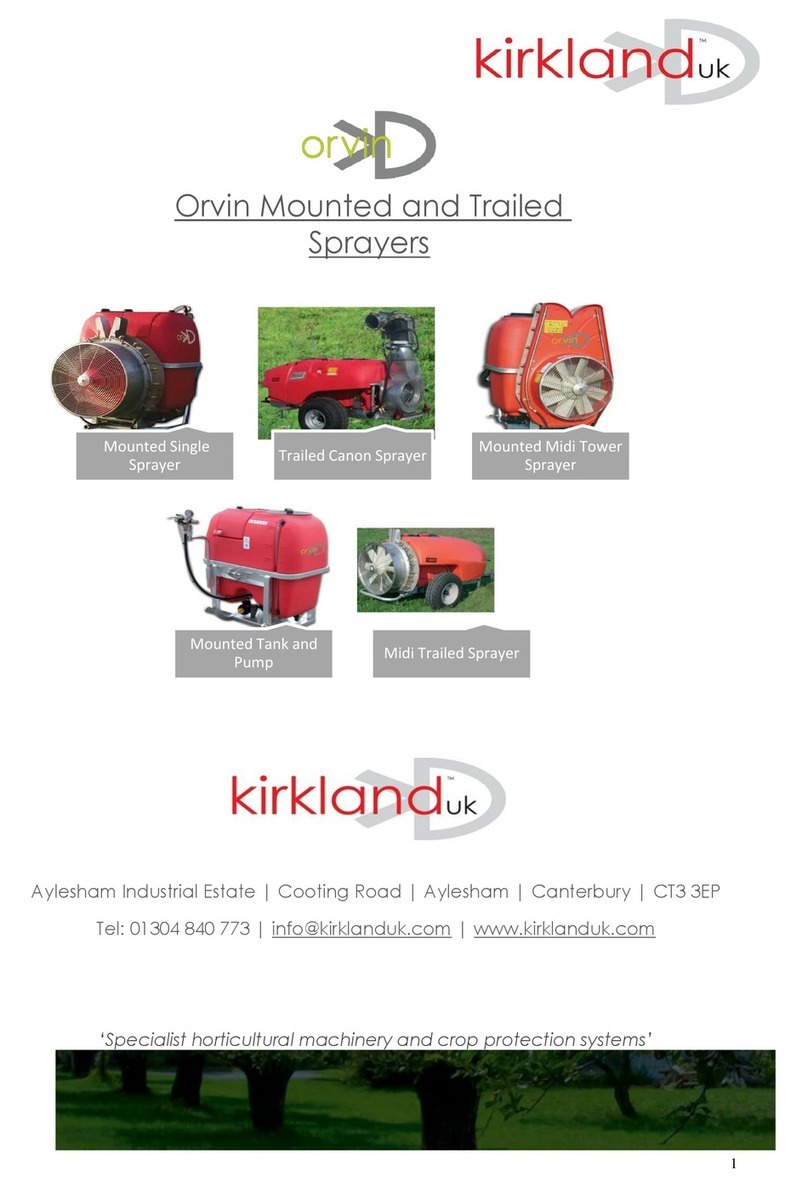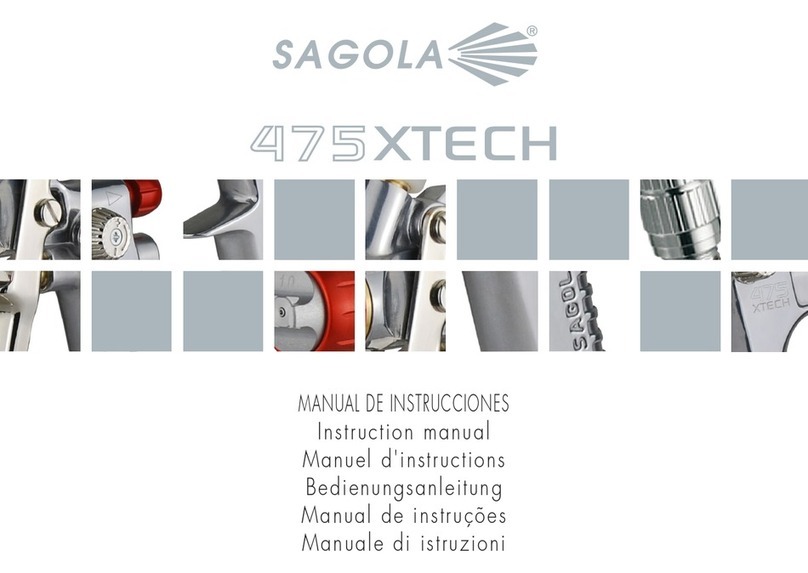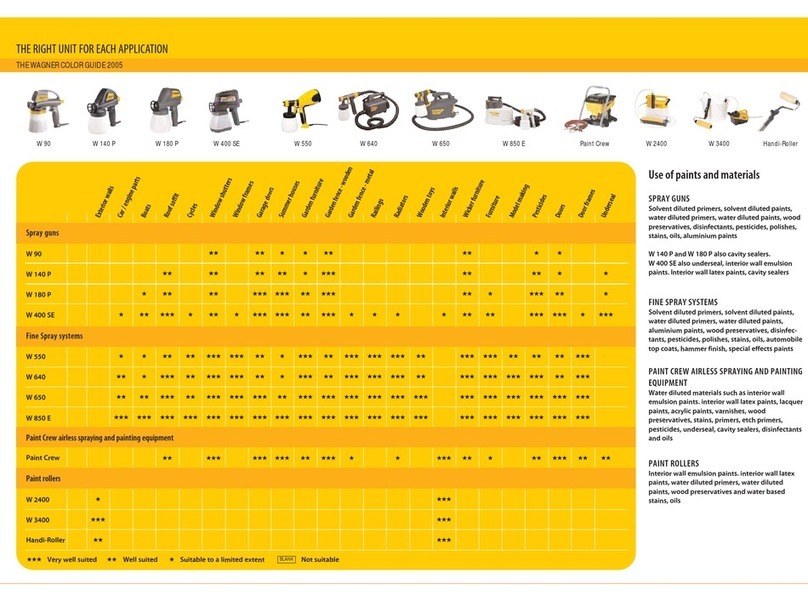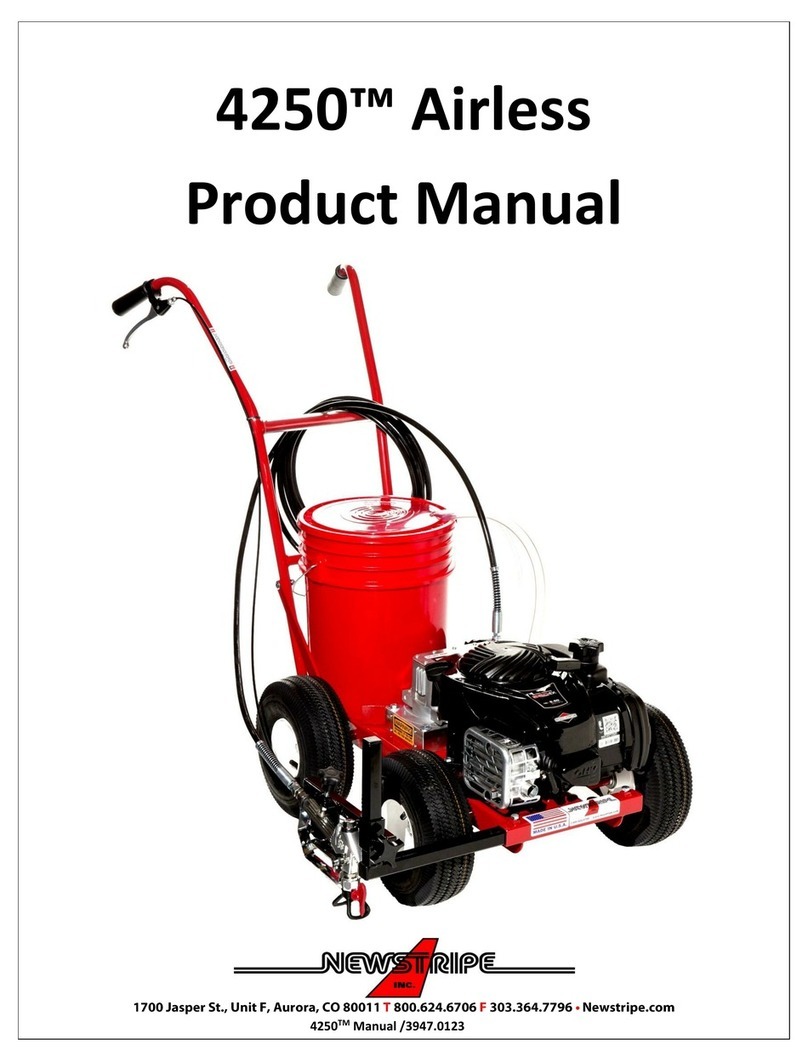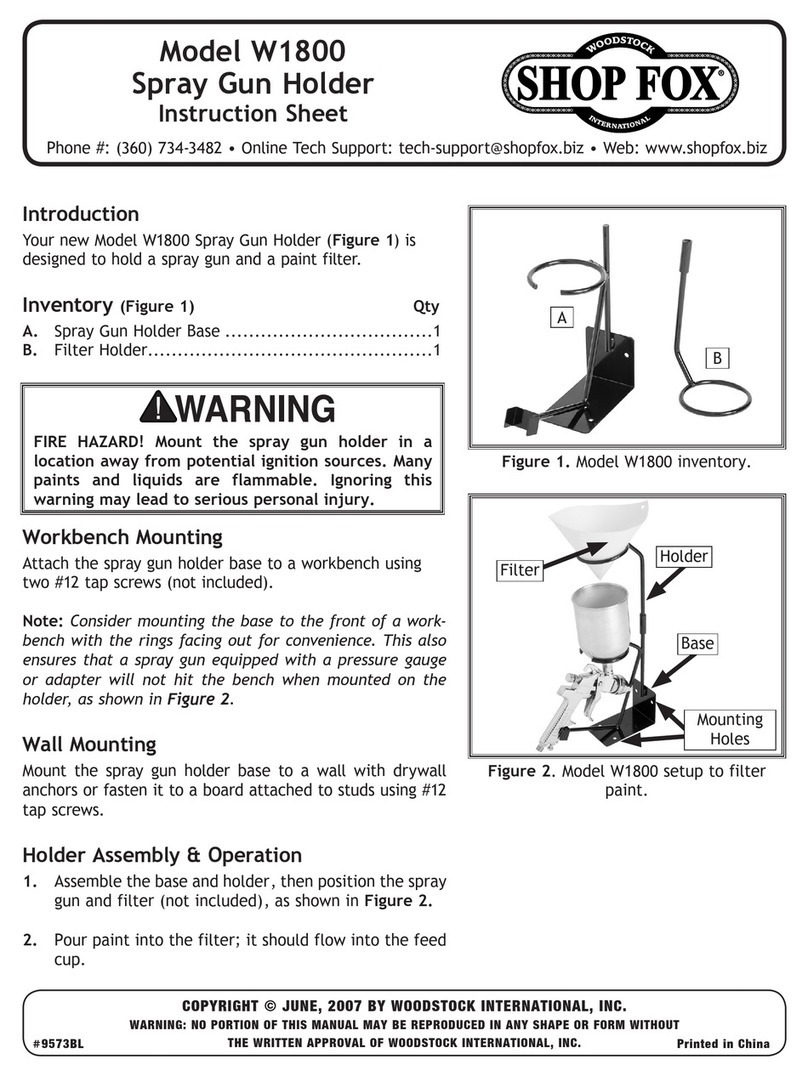Berthoud HERMES 800 User manual

HERMES 800 / 1000 / 1200
All regulations
82.526-A ENGLISH
Equipment designed for the treatment of cereal
and market garden crops
To be read carefully and kept for future reference
© BERTHOUD Agricole 06/2017

2 82.526 - HERMES
ADDITIONAL INFORMATION
Additional information is available in the following manuals:
Reference
Safety and control of sprayers Manual 82.471
Boom ALSR (15/16/18 m) Manual 82.525
NOZAL nozzles table Manual 82.467
Control units Manual 82.528
i
IMPORTANT:
Please read the manuals before using the equipment for the rst time, according to its conguration.
NOTE:
Depending on the conguration of your equipment, some manuals may not be available in your
documentation.
When this 'refer to' symbol is shown, please see the page indicated for further information.

82.526 - HERMES 3
CONTENTS
1. General ______________________________________________________________ 5
1.1. Technical characteristics 5
1.2. Overall dimensions 6
1.3. Weights table 6
1.4. Information plate 7
1.5. Noise measurements 7
1.6. Position of safety stickers 8
2. Presentation of the equipment _____________________________________ 9
2.1. Step 9
2.2. Direct reading oat gauge 9
2.3. Tape gauge (Option) 10
2.4. Boom height 10
2.5. Rinsingtank 10
2.6. Hand washtank 11
2.7. Main tank drain 11
2.8. Agitation 11
2.9. Rinsing balls 11
3. Starting-up the sprayer ___________________________________________ 12
3.1. Adapting the transmission shaft 12
3.2. Hitching the equipment to the tractor 12
3.3. Unhitching the sprayer 12
3.4. Rinsingbefore using for the rst time 13
3.5. Recommendations for use 13
4. Main sprayer functions with Gama 101 or Gama 130 pump _____ 14
4.1. Adjusting the valves 14
4.2. Filling the main tank 14
4.3. Induction hopper 15
4.4. Spraying functions Positions 1-10 16
4.5. Complete rinsing functions: Positions 11-15 17
4.6. Adjusting calibrated returns 17

4 82.526 - HERMES
5. Sprayer maintenance _____________________________________________ 18
5.1. Practical advice 18
5.2. Filters 18
5.3. Blocked nozzles 19
5.4. External washing option 19
5.5. Protection against oxidising agents 19
5.6. Checks prior to the spraying season 19
5.7. Periodic maintenance table 20
5.8. Winter Storage 20
6. Lubrication and greasing _________________________________________ 21
6.1. Gama 101 and Gama 130 pumps 21
6.2. Greasing 21
7. Spraying circuit ___________________________________________________ 22
8. Reminder of your parameters_____________________________________ 23
9. Notes on treatments applied during the season _________________ 24

82.526 - HERMES 5
1. GENERAL
1.1 TECHNICAL SPECIFICATIONS
HERMES Mounted Sprayer, regulation AUTOREGLEUR
Structure
Chassis
Single-piece chassis protected by UHR polyester paint
Stainless steel nuts and bolts
Retractable step for access to the manhole.
Boom lifting on mast with suspension on nitrogen ball
Hitching 3-point hitch
Fixed standing feet (with optional handling casters)
Tanks
Main tank High density polyethylene tank with large lling hole
Capacity: 800, 1000 or 1200 litres.
Rinsing tank 120-litre polyethylene rinsing tank
Handwash tank 18-litre polyethylene handwash tank.
Gauges Direct read oat gauge (main tank and rinsing tank).
Tape gauge (optional on main tank).
Regulation Pump Gama 101 3 piston volumetric pump (20 bar, 105 litres/minute).
Optional Gama 130 pump (20 bar, 130 litres/minute).
Regulation Self-adjuster Autoregleur, E.C.Control or E.C.Tronic.
Controls
Transmission Universal joint transmission
Electric valves Remote spraying control by electric check valves (ECV) with main cut-off on the
control box in the cab.
Electronic box Autoregleur Box, E.C.Control or E.C.Tronic.
Use BERLOGIC panel (manually controlled valve block). It contains all the equipment's
functions to make use easier.
Standards Road signals Complies with trafc regulations.
Approvals Environmental compliance
Functions
Filling
Filling via the manhole or via the hydro-ller.
Connection via 2" quick connector.
6m lling pipe with strainer.
25-litre retractable induction hopper with cans and circuit rinsing system.
Filtration
On lling (main tank):
- Strainer, 8/10 mesh.
On suction (main tank and rinsing tank):
- Filter, 6/10 mesh.
On delivery:
- Filter, 4/10 mesh.
Agitation Agitation by Hydromax with intensity adjustment on BERLOGIC panel.
Rinsing Cleaning the main tank with rinsing balls (Lav'ton).
Rinsing the boom without return to the main tank.

6 82.526 - HERMES
1.2 OVERALL DIMENSIONS
01
B
CA
BOOMS
ALSR 15 ALSR 16 ALSR 18
HERMES
A2.450 m 2.450 m 2.450 m
B2.615 m 3.150 m 3.150 m
C1.665 m 1.665 m 1.665 m
The height should be understood with the equipment on its support on the ground (without wheels).
1.3 WEIGHTS TABLE
The data below relates to France only (see DREAL document).
EQUIPMENT HERMES 800 HERMES 1000 HERMES 1200
BOOM ALSR 15 ALSR 16 ALSR 18 ALSR 15 ALSR 16 ALSR 18 ALSR 15 ALSR 16 ALSR 18
Kerb weight 915 kg 925 kg 930 kg 925 kg 935 kg 940 kg 930 kg 940 kg 945 kg
Max. gross
vehicle weight 2015 kg 2115 kg 2120 kg 2440 kg 2450 kg 2455 kg 2720 kg 2730 kg 2735 kg
These weights are to be understood in the equipment's heaviest conguration (options, settings, suspensions).
NOTE:
Before you hitch the equipment, it is recommended that you check the maximum permissible load
on your tractor coupling.
This information will be provided by your tractor supplier in the technical handbook of your tractor..

82.526 - HERMES 7
1.4 INFORMATION PLATE
The position of the information plate on your equipment is shown on page 8.
The "Type Berthoud " box contains letters and gures.
- Example: HER R 12 LR 18
HER = HERMES equipment
R = Autoregleur regulation
12 = Nominal capacity 1200 litres (08 = 800 litres, 10 = 1000 litres)
LR = ALSR boom
18 = Width 18 metres (15 = 15 metres, 16 = 16 metres)
The "PV" (kerb weight) and "PTAC"
(max. gross vehicle weight) boxes
contain information from the table
below.
1.5 NOISE MEASUREMENTS
ATMOSPHERIC NOISE EMITTED BY: HERMES carried equipment, self-adjusting regulation
Tractor and sprayer
when working
Tractor,
PTO disengaged,
sprayer at rest
•Maximum sound pressure level:
- From the induction hopper 78 dB(A) 73.5 dB(A)
- From the tractor driver's seat 76 kW 72 dB(A) 70 dB(A)
•Maximum sound pressure level:
- Tractor only = 99.1 dB(A)
- Tractor + sprayer = 101.2 dB(A)
i
IMPORTANT:
The legislation in force must be complied with and ear protectors should be worn if necessary.

8 82.526 - HERMES
1.6 POSITIONS OF SAFETY STICKERS
417.572 417.580417.593
417.597
418.630
401.362
417.576
417.576
417.465
455.278
443.250
417.590
426.484
ATTENTION : Lors de l’accrochage ou du décro-
charge de l’appareil assurez-vous que la surface
portante du sol est stable et horizontale.
ATTENTION : When hitching or dismounting
sprayer from tractor linkage make sure that its
base is stable and horizontal with the ground.
VORSICHT : Beim An-Und Abbau des Geraetes
bitte prüfen Sie vor, dass die Grundfläche stabil
und horizontal ist.
ATENCIÓN : Para enganchar y desenganchar la
maquina asegurarse que el suelo sea llano y
estable. 467.289 C
467.289
417.587
417.579
400.382
401.429
401.428
02
- HERMES -
i
IMPORTANT:
It is important to keep safety stickers in place and in good condition. Indeed, they draw your
attention to potential hazards and refer to the user manual.
Check their location on the sprayer and see their meaning in the manual No. 82471 (sprayer
safety, checks and maintenance).

82.526 - HERMES 9
2. PRESENTATION OF THE EQUIPMENT
2.1 STEP
A non-slip step (1), housed in the hopper, provides safe access to the manhole (hopper in closed position).
To remove the step from its housing:
• Pull the step towards you (1) and pull it out all the way.
• Turn it clockwise until it is horizontal.
•Lower the riser (2).
To return the step to its housing:
•Fold up the riser (2).
• Turn the step (1) anti-clockwise into the vertical.
• Push it home until it locks.
i
IMPORTANT:
Whenever the sprayer is in motion, the step (1) must be locked in its housing.
1
1
2
03
2.2 DIRECT READ FLOAT GAUGE
A direct read oat gauge (1), highly visible from inside
the tractor cab and at control station (BERLOGIC) is
positioned on the front left of the equipment. It shows
the volume contained in the main tank.
1
04

10 82.526 - HERMES
2.3 TAPE GAUGE (Option)
A tape gauge (1), rhighly visible from inside the tractor
cab and at control station (BERLOGIC) is positioned
on the top of the equipment. It shows the volume
contained in the main tank.
1
05
2.4 BOOM HEIGHT
A working height (H) between 50 and 60cm above
the surface to be treated is recommended. It is dened
by the nozzle spraying angle and spacing.
There is a risk of drift with a greater height.
H
06
2.5 RINSING TANK
A 120-litre clean water tank (2) is used to rinse
the sprayer.
The rinsing tank (2) is positioned under the right
hand side of the main tank.
Its lling level can be seen from the tractor cab and
at the control station via a direct read oat gauge (3).
IMPORTANT:
The rinsing tank MUST be lled with
clean water, not under pressure:
•Via the cover (1).
•Or via the connector (4) situated
on the control station. To ll, open
valve (D).
07
1
4
D
2
3

82.526 - HERMES 11
2.6 HANDWASH TANK
08
3
21
For hygiene and convenience: An 18-litre clean water
tank (2), separate from the rinse tank is provided for
washing your hands and all body parts (face, eyes,
etc.) contaminated by the product.
The tank is on the left of the main tank; the tap (3)
is accessed under the control wheel on the control
station.
To wash your hands, open the tap (3) to the
desired ow.
WARNING:
The handwash tank MUST be lled
with clean, unpressurised water, via
the cover (1).
2.7 DRAINING THE MAIN TANK
Turn the valve (1) on the control station to
position (gure 09).
Recover the liquid from the tank in a container
suitable for phytosanitary residues.
09
1
2.8 AGITATION
Hydraulic agitation produces a uniform product mixture in the tank, before and during the spraying operation
( 4.4, page 16 for the position of the valves).
2.9 RINSING BALLS
The balls (1) on the gauge tube inside the main tank
provide the rinsing function ( 4.4, page 16 or 4.5,
page 17 for the various rinsing phases).
NOTE:
With a direct read external gauge, there
is one rinsing ball.
With a tape gauge, there are two rinsing
balls
10
1
1

12 82.526 - HERMES
3. READYING THE SPRAYER FOR USE
3.1 ADAPTING THE TRANSMISSION SHAFT
i
IMPORTANT:
This operation must be carried out with the aim of achieving the shortest possible length.
shafts 20 mm longer than their guards when in
their position ready for use.
• For your safety, the two half-shafts must overlap by
a minimum of 300 mm.
• Re-t the transmission shaft ready for use.
L
L
10 mm mini.
L
10 mm mini.
L
11
The length of the transmission shaft can mean
that an adjustment is necessary, depending on the
tractor used.
This is the procedure to follow, once the sprayer
is hitched:
• Align the jaw on the universal joint on the tractor's
power take-off shaft.
• Separate the two half-shafts, connect them to the
corresponding shaft by tting the female guard on
the side of the tractor.
• Present the two half-shafts side by side.
• Mark and cut if necessary, ensuring that you leave
10 mm clearance between the end of the tube and
the heel of the jaw.
• Carefully de-burr both tubes.
• Grease the contact surfaces.
• Cut the guards to the same size as the half-shafts,
using a hacksaw, taking care to leave the half-
3.2 HITCHING THE EQUIPMENT TO THE TRACTOR
• Attach the 3-point hitch on the equipment to the
hitching hook on the tractor. The equipment must
be horizontal.
• Fix the end of the transmission to the power
take-off.
• Attach the transmission shaft guard chain in the
location provided.
• Attach the hydraulic connectors.
• Make the electrical connections.
NOTE:
• Ensure that the guards on the
transmission shaft are in good
condition.
• Ensure that there are no foreign
bodies in the tank.
• Check the oil and greasing levels on
the various parts.
• Check that the lters are clean.
3.3 UNHITCHING THE SPRAYER
• Take up a position on a rm, at surface.
• Place the sprayer in its storage position.
• Disconnect the electrical connections.
• Disconnect the hydraulic connections.
• Rest the hydraulic pipes on the supports of the
sprayer, provided for the purpose.
• Disconnect the transmission shaft from the tractor.
• Unhitch the sprayer.
IMPORTANT:
The sprayer must only be unhitched
with the tanks completely empty.

82.526 - HERMES 13
3.4 RINSING THE EQUIPMENT BEFORE USING IT FOR THE FIRST TIME
WARNING:
Before using your sprayer with phytosanitary products for the rst time (herbicide,
insecticide or other), the equipment must be ushed completely.
• Remove the nozzles if they are tted.
• Unscrew the end caps from the pipes.
• Fill the tank to 1/5 with water.
• Spray ( 4.4, page 16).
• Remove and clean the lters.
• Replace the end caps on the pipes.
• Fit the nozzles.
NOTE:
This will eliminate any foreign particles
that might be in the spraying circuit and
which could otherwise block nozzle
orices.
3.5 RECOMMENDATIONS FOR USE
When starting up:
• Start the tractor engine.
• Power up the controls.
• Engage the power take-off.
Always check:
• Run the ow from the nozzles at a pressure of 3 bars for 1 minute before starting the spraying session,
• If the ow is 10% higher than the initial value, the nozzles should be replaced.
WARNING:
All operations on valves must be done with the power take-off stationary.

14 82.526 - HERMES
4. MAIN SPRAYER FUNCTIONS
WITH A GAMA 101 OR GAMA 130 PUMP
4.1 ADJUSTING THE VALVES
The main functions are shown on the BERLOGIC
(list (1), gure 12).
To obtain the desired position, pull the indexing palette
(6) towards you and turn the wheel (4) to position the
index (3) opposite the desired function on the disc (2)
and then release the indexing palette (6).
The white numbers on the disc (2) from to refer
to the main functions.
The blue numbers on the disc (2) from to refer
to the complete rinsing functions.
NOTE:
•For access to functions to , set
the index (3) to position on the
disc (2) and move the palette (5)
to the right.
•to return to functions to , set the
index (3) to position on the disc (2)
and move the palette (5) to the left. 12
5
6
3
4
2
15
WARNING:
All operations on valves must be done with the power take-off stationary.
4.2 FILLING THE MAIN TANK
Via the manhole (gravity):
• Open the cover on the top of the tank.
Via the external suction device without using
the hopper:
There should be a quantity of water in the main tank
before you start. This water can be poured through
the manhole or be drawn in from the rinsing tank
( 4.4, page 16).
• Attach the lling pipe to the quick connector (1)
(gure 13).
• Set the index on the steering wheel in position .
• Valve (A) in position .
• Valve (B) in position .
• Lever (C) in position .
• Valve (D) in position .
• Dip the lling pipe into the water to be pumped.
• Engage the tractor's power take-off and bring it to
540 rpm.
• When the lling operation is complete, set the lever
(C) to position .
• Remove the lling pipe and replace the cap on the
quick connector (1).
13
B
1
D
C
A

82.526 - HERMES 15
4.3 INDUCTION HOPPER
The Induction hopper is used to mix phytosanitary
powders and liquids while the main tank is being lled.
This feature ensures that the product is mixed
perfectly with the water and makes the work easier
at the same time.
There are three different ways of mixing:
1 - By drawing liquid from the main tank.
2 - By drawing liquid from the rinsing tank.
3 - By drawing it in from outside.
NOTE:
When the lever (C) is in position ,
drawing in from outside is cut off.
In case 2, drawing in clean water has several
advantages:
• Beingable to rinse accessories, cans and the
hopper with clean water.
• Being able to clean the induction hopper circuit
immediately after use.
NOTE:
It is necessary to partly ll the main
tank ( 4.2) before incorporating in the
hopper.
Position of the index on the wheel
in each case:
Suction point
Position of
the index on
the wheel
Power
take-off
speed
1 - Main tank 540 rpm
2 - rinsing tank 540 rpm
3 - External 540 rpm
OperatiOn Of the hOpper
• Set the wheel to the desired position (see table
above).
• Press the pedal (1) and pull the hopper towards
you to lower it.
• Unlock the lid and open it.
• Pour the phytosanitary product into the hopper.
• Valve (A) in position .
• Valve (B) in position .
• Lever (C) in position .
• Valve (D) in position .
• Engage the tractor's power take-off.
• To empty the hopper:
- Replace the cover and lock it.
The product is incorporated and mixed in the
sprayer's main tank.
• To rinse the induction hopper:
- Set the index on the wheel in position .
- Open valve (A) in position (gure 14);
it actuates the rinsing manifold in the hopper.
- After this operation, close valve (A) in position .
NOTE:
Close valve (A), position , as soon
as the hopper is empty, so as not to
produce foam in the main tank.
rinsing cans
• Valve (A) in position (gure 14).
• Put the product can on the part (1) (gure 15)
and press.
14
B
1
D
A
C
1
15

16 82.526 - HERMES
4.4 SPRAYING FUNCTIONS: POSITIONS 1-10
NOTE:
The rinsing functions allow partial rinsing if there is no change of products but not a complete
rinsing of the circuit (for that, 4.5).
FUNCTIONS
Position of the
index on the
wheel
Position of the valves State of the
sections
Power
take-off
A B C D
Priming / Filling the main tank from
outside Closed 540 rpm
Mixing the product via the hopper using
the rinsing tank Closed 540 rpm
Filling the main tank from outside Closed 540 rpm
Mixing the product via the hopper using
the main tank Closed 540 rpm
Spraying
Without agitation
Open 540 rpmWith 50% agitation
Between and
With 100 % agitation
Rinsing the boom using the rinsing tank
(clean water) Open 300 rpm
Rinsing the main tank using the rinsing
tank (clean water) Closed 300 rpm
Rinsing the main tank using the main tank Closed 300 rpm
External washing option Closed 300 rpm
Isolating the circuit (cleaning the lters) Closed 0 rpm
WARNING
All operations on valves must be done with the power take-off stationary.
16
B
D
C
A

82.526 - HERMES 17
4.5 COMPLETE RINSING FUNCTIONS: POSITIONS 11-15
The rinsing cycle provides thorough rinsing at the end of the day or when there is a change of product.
FUNCTIONS
Position of
the wheel
index
Position of the valves State
of the
sections
Power
take-off Time
A B C D
Rinsing the boom using the rinsing
tank (clean water) Open 300 rpm 15 s
Rinsing the main tank using the
rinsing tank Closed 300 rpm 15 s
Rinsing the boom and the agitation
circuit with the rinsing tank Open 300 rpm 15 s
Rinsing the product mixing circuit via
the hopper using the mixing tank Closed 300 rpm 15 s
Spraying the bottom of the main tank Open 300 rpm 15 s
17
B
D
C
A
4.6 ADJUSTING CALIBRATED RETURNS
The distributor unit consists of electric check valves (V.E.C.) (2) for each boom section.
These valves supply lling each boom section in the "open" position (spraying) and the return to tank in the
"closed" position.
calibrated return adjustment
• The tank return is calibrated by means of a
micrometer screw (3).
• Adjust the screw (3) to obtain the same pressure on
the pressure gauge (1) in both positions "closed"
and "open" (spraying). Carry out this operation for
each electric check valve.
• Use the electric switches on the control box to start
and stop spraying. 18
3
1
2

18 82.526 - HERMES
5. SPRAYER MAINTENANCE
5.1 PRACTICAL ADVICE
regular maintenance
By cleaning your sprayer regularly during and at the
end of spraying programs:
• You will avoid spreading phytosanitary residues on
crops,
• You will ensure a good distribution of the product
by avoiding clogged nozzles,
• You will extend the life of your sprayer.
fOam fOrming in the tank
If this occurs, reduce the motor speed to below
540 rpm or add an anti-foaming additive to the tank
contents during lling.
final fill:
When lling the tank for the last time, add only the
amount of water and product necessary to spray the
remaining area of eld.
maintenance at the end Of treatment:
The whole of the equipment should be rinsed internally
(including tanks, booms and nozzles) by following the
procedures ( 4.5, page 17).
• Wash the outside of the sprayer ( 5.4, page 19).
• Check the cleanliness of the nozzles and lters
(5.2 and 5.3).
• Put the sprayer away.
WARNING:
Carry out sprayer maintenance
operations with the tractor engine
switched off, the ignition off and the
power take-off disengaged.
i
IMPORTANT:
Do not add fuel oil to the spraying
mixture as an anti-foaming agent.
5.2 FILTERS
main tank suctiOn filter
The suction lter (2) is located in the control station.
To clean the lter cartridge, you must position the
index on the wheel on function and valve (B) in
position ( 4.4, page 16).
To remove the lter cartridge, unscrew nut (1) from
the lter.
NOTE:
6/10 mesh lter cartridge tted as
original equipment (10/10 available as
a replacement for liquid fertiliser).
rinsing tank suctiOn filter
The suction lter is located between the tank outlet
connector and the non-return valve.
delivery filter
The delivery lter (3) is located in the control station.
It provides additional ltering.
To clean the filter cartridge, you must place the
index on the wheel on function and valve (B) in
position ( 4.4, page 16).
To remove the lter cartridge, unscrew nut (4) from
the lter.
NOTE:
4/10 mesh lter cartridge tted as
original equipment (8/10 available as a
replacement for liquid fertiliser).
19
1
4
3
B
2
i
IMPORTANT:
The lter cartridge must be cleaned
after every application. Grease seals.

82.526 - HERMES 19
5.3 CLOGGED NOZZLES
Clean with a brush and rinse clogged nozzles with water.
For this, use the brush/wrench (BERTHOUD reference
779.354).
WARNING:
Never blow into a nozzle.
5.4 EXTERNAL WASHING OPTION
• Unclip the brush..
• Attach it to the quick connector on the unwinder.
•
S
et the index on the wheel to function
( 4.4, page 16)
and then proceed with cleaning.
• When washing is complete, put the brush back
in its place.
The use of a detergent is recommended to facilitate
cleaning:
- All Clean (5 l) BERTHOUD reference 788.796.
- All Clean Extra NF (5 l) BERTHOUD reference
788.792.
i
WARNING:
We recommend that you wash the
outside of the sprayer, once rinsing is
complete ( 4.5, page 17) to avoid
contaminating the outside again.
5.5 PROTECTION AGAINST OXIDISING AGENTS.
• Prior to treatments using liquid fertiliser, it is desirable to protect the equipment and boom completely
by spraying with an oily product, so as to prevent any attack by rust or deterioration of the paintwork.
• Rinsing with a pressure jet after treatment will remove any trace of dust and the oily product
5.6 CHECK BEFORE THE SPRAYING SEASON STARTS
Filters: Make sure that the suction and delivery lters are clean and in good condition.
Pipes: Look for any leaks. Check for kinks in the pipes.
Seals and connectors: Check that connection nuts are tightened and change seals if necessary.
Pump, reduction gear, angle transmission: Check the oil levels.
Nozzles: Change the nozzles once per year or if their ow rate is 10% to 15% greater than their initial ow rate.
For this use FLOW TEST, BERTHOUD reference 765.241 or FLOW COMPARATOR, BERTHOUD reference
778.887.
Tank: Check that there is no foreign matter in the tank.

20 82.526 - HERMES
5.7 PERIODIC MAINTENANCE TABLE
Inspection points Every
treatment Monthly After winter
storage
Before winter
storage
Rinse the tank X X
Rinse the spraying circuit X X X
Clean the suction lter X X
Clean the delivery lter X X
Clean the nozzles X
Check the road signals X
Apply moisture repellent product to electrical connectors X X X
Clean and grease transmissions (universal joint) X(or max. 50h) X X
Condition of cables X X
Condition of safety devices X X
Alignment of nozzle carriers and nozzles X X
Alignment of the boom arms X X
Grease friction parts X X
Grease mechanical joints X
Oil level in pump X
Clean the drip preventer X
Clean the outside X
Check the ow through nozzles X
Check the drip preventer X
Drain the pump X
Check the pressure in the nitrogen lifting bulb (depending
on boom) X
5.8 WINTER STORAGE OF THE SPRAYER
• The sprayer must be clean before winter storage.
• Rinse the entire circuit thoroughly (with the cleaning
product)
(
4.5, page 17
)
.
• Drain the tank.
• Rinse with clean water.
• Completely drain the uid circuit, making sure that
the pump is not operated for too long without water
(2 minutes maximum).
• Protect from frost by adding the necessary quantity
of anti-freeze to provide the level of protection
required.
• When adding anti-freeze, take into consideration
the residual volume in the circuit pipework.
• Run the pump at idling speed.
• Operate all valves in all positions, so as to protect
the pump valves, regulator, lters and pipes.
• Open the sprayer to let anti-freeze into the boom.
When the anti-freeze reaches the nozzles, stop
spraying and disengage the power take-off.
• Check the level of protection using an anti-freeze
tester, by taking a sample and adjusting the
dosage, if necessary.
• Grease or oil metal parts and moving parts where
rust can occur.
• Remove oxidation from contacts on electrical
connectors (BERTHOUD reference 765.065,
aerosol KF F2).
• Clean the outside of the equipment
( 5.4, page 19), re-paint any bare mechanical
parts (BERTHOUD reference 769.077 for the
blue paint aerosol or 778.890 for the green paint
aerosol).
• Store the equipment out of the sun and sheltered
from bad weather on at, rm ground.
This manual suits for next models
2
Table of contents
Other Berthoud Paint Sprayer manuals

Berthoud
Berthoud ULV User manual

Berthoud
Berthoud PULVASOL 200 User manual

Berthoud
Berthoud VERMOREL 3000 ELECTRIC User manual

Berthoud
Berthoud ELYTE 2 360 EPDM User manual

Berthoud
Berthoud COSMOS 18 PRO User manual
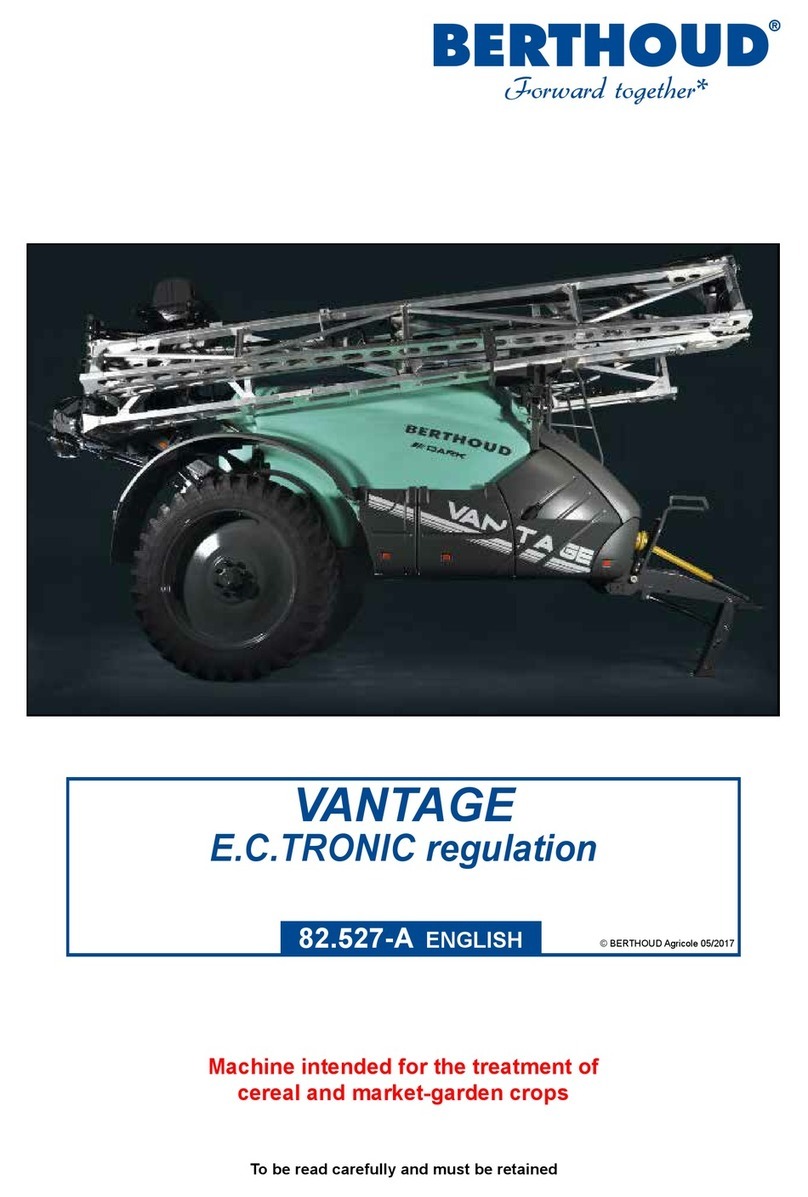
Berthoud
Berthoud VANTAGE E.C.TRONIC 28-30 User manual

Berthoud
Berthoud ALTO 300 User manual

Berthoud
Berthoud RAPTOR 2540 User manual
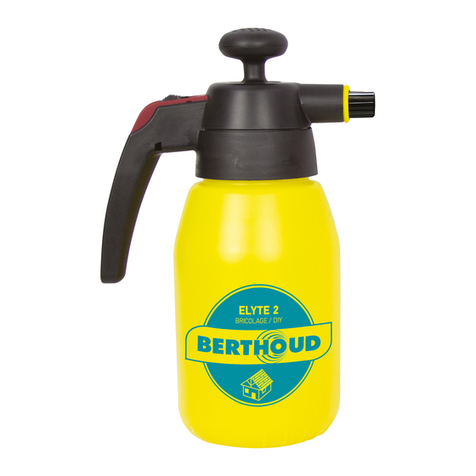
Berthoud
Berthoud ELYTE 2 VITON User manual

Berthoud
Berthoud VERMOREL 3000 ELECTRIC User manual


